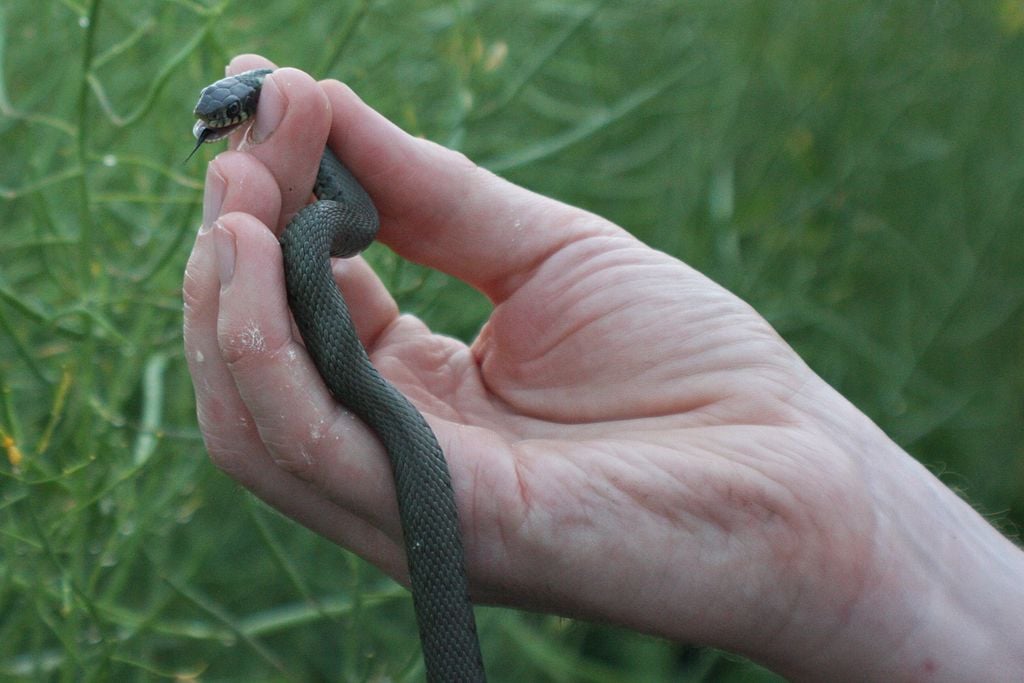A striking snake steals a celeb’s name.

A team of herpetologists has announced a new snake species in the western Himalayas, notable for its many teeth and distinctive features, and named Anguiculus dicaprioi in honor of Leonardo DiCaprio. The species was first observed in 2020, and detailed DNA and morphological work later confirmed it as new to science. Its name also recognizes DiCaprio’s long standing commitment to conservation and biodiversity.
This snake is small in size, about 22 inches long, and bears a copper tone, large nostrils, a short head, and a steeply domed snout. It inhabits high elevations up to roughly 6,100 feet across parts of Nepal and the Indian Himalayas.
1. The snake is called Anguiculus dicaprioi, or DiCaprio’s Himalayan snake

Researchers described the species under a new genus, Anguiculus, with the species epithet dicaprioi chosen in tribute to DiCaprio’s environmental advocacy, as stated by the team that published the study in Scientific Reports and summarized on Wikipedia. This naming follows the tradition of honoring people who contribute to conservation efforts.
The formal taxonomic description places it among colubrid snakes, and the authors highlight that the genus was previously unrecognized in that region. Naming it after a public figure helps draw attention to both the species and the fragile Himalayan ecosystems.
2. It has dozens of razor sharp teeth in its jaws.

This snake’s dental structure is unusually rich, with dozens of small, sharp teeth lining its jaws, distinguishing it from its relatives, as discovered by researchers examining its skull and dentition. The multiplicity of teeth likely assists in gripping slippery prey within its montane habitats, as reported by the researchers.
Because many snakes have fewer and larger teeth, the sheer count here suggests specialized feeding habits. That detail became a headline in popular media, emphasizing the snake’s distinctive uniqueness in comparison to many of its kin.
3. It lives in the western Himalayas at high elevation.

Anguiculus dicaprioi is known from areas of Nepal and India’s Himachal Pradesh, with specimens recorded at elevations around 6,100 feet. The snake’s habitat includes muddy roads and forested slopes in that altitude range, according to conservation news reports. Researchers believe its range is restricted by altitude, climate, and ecological barriers.
Such elevation preferences imply it’s adapted to cooler, montane conditions. Its survival likely depends on microhabitats offering moisture, cover, and prey under Himalayan climatic regimes.
4. Its body measures about twenty two inches long.

At roughly 22 inches from head to tail, this snake is modest in length relative to many Himalayan snakes. Its compact size helps it navigate through leaf litter, rocks, and tight crevices in mountain terrain. The size also influences its prey selection and predator avoidance strategies.
Smaller size reduces its energy needs but limits prey choice, meaning it likely hunts insects, lizards, or small amphibians. The body proportions suggest a specialized ecological role within its high altitude environment.
5. Its head is surprisingly short and broad.

The snake’s head is shorter and broader than that of many related species. This trait likely correlates with its unique feeding method and the number of teeth it carries. A domed snout and wide skull allow it to grasp prey firmly while operating in tight, rocky terrain.
Such skull shape indicates adaptation to its specific environment. The structure may also influence how it senses vibrations or heat signatures in the ground, traits essential for hunting in dim or concealed spaces among stones and vegetation.
6. It bears a faint grey collar marking.

A thin grey band or collar runs subtly along its neck, a characteristic that distinguishes it from other regional snakes. The faint pattern blends with its copper toned body, making it nearly invisible against forest floors or dry leaves. Researchers note this detail as one of the key identifiers in its field description.
Camouflage is likely its first line of defense. The muted collar may disrupt its outline and help it evade predators, while also serving as a communication cue within its species, if visual signaling plays a role in their behavior.
7. It remained motionless when captured.

Observers noticed that when found, the snake did not flee or strike but stayed completely still. That behavior suggests it relies on stillness rather than aggression to survive. The motionless reaction is typical of small reptiles that depend on camouflage for protection.
Remaining still likely prevents detection by predators or researchers alike. Such behavior underscores its adaptation to environments where movement can betray location. For a small, cryptic species, stillness can be as effective a shield as venom or speed.
8. Its discovery underscores Himalayan biodiversity importance.

The identification of this new species highlights how incomplete our understanding of Himalayan biodiversity remains. These mountains harbor immense ecological variety shaped by altitude and climate gradients, making them a frontier for new species discovery. Each find expands knowledge of the region’s evolutionary history.
The study’s publication also draws attention to the environmental pressures facing Himalayan habitats. As deforestation, road expansion, and climate change alter mountain ecosystems, species like Anguiculus dicaprioi could vanish before we fully study them, reinforcing the urgency of continued conservation research.
